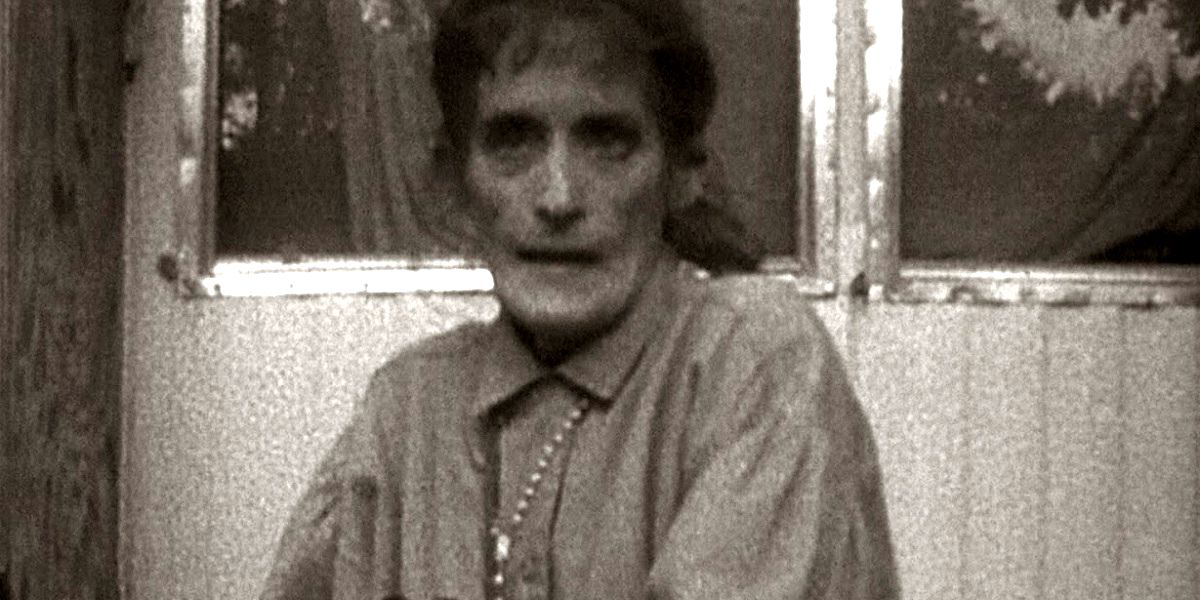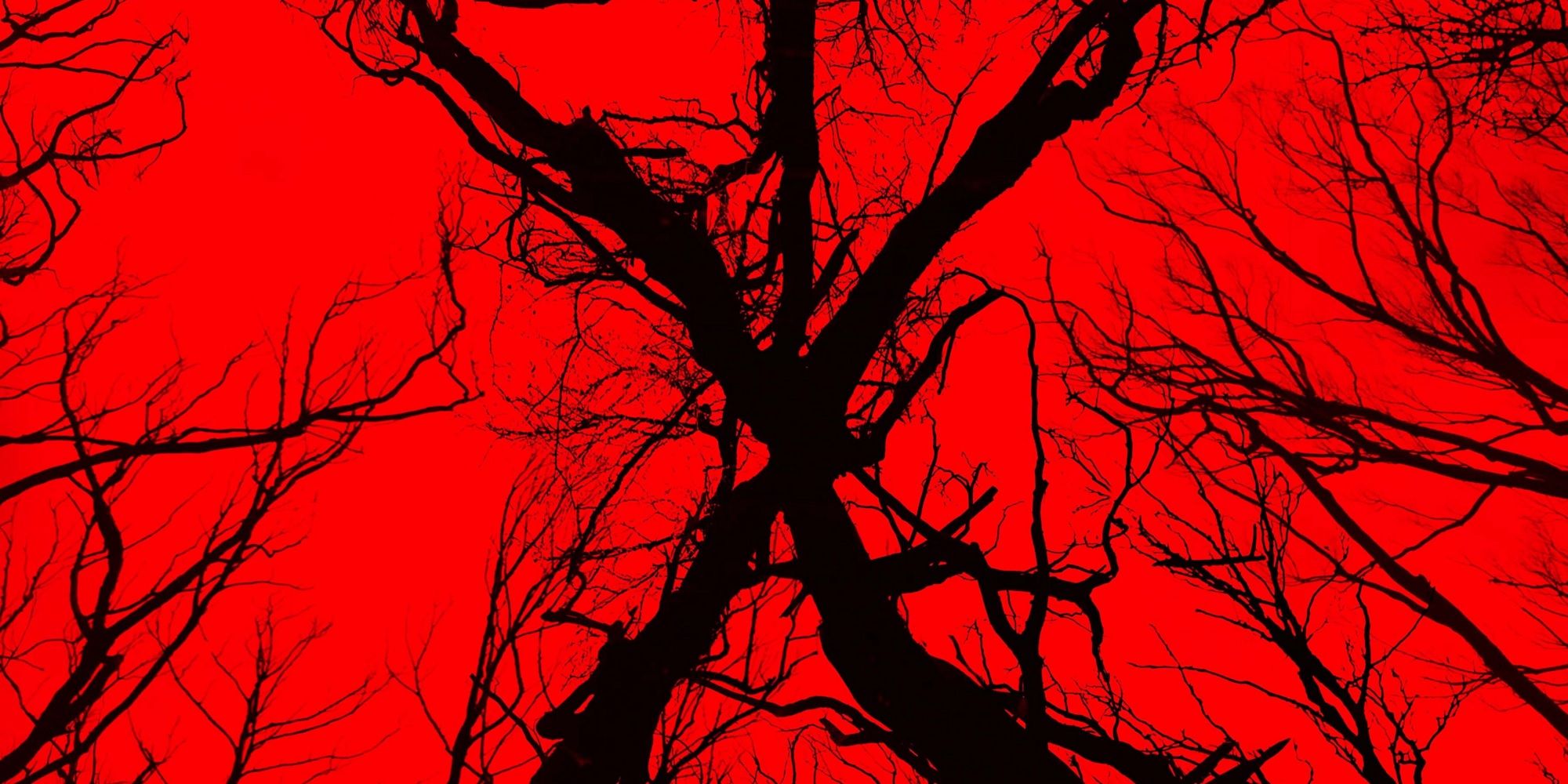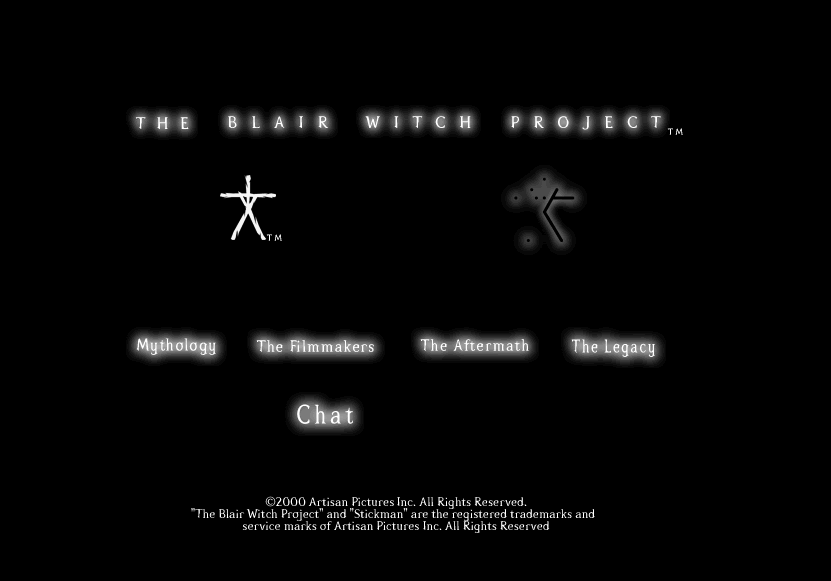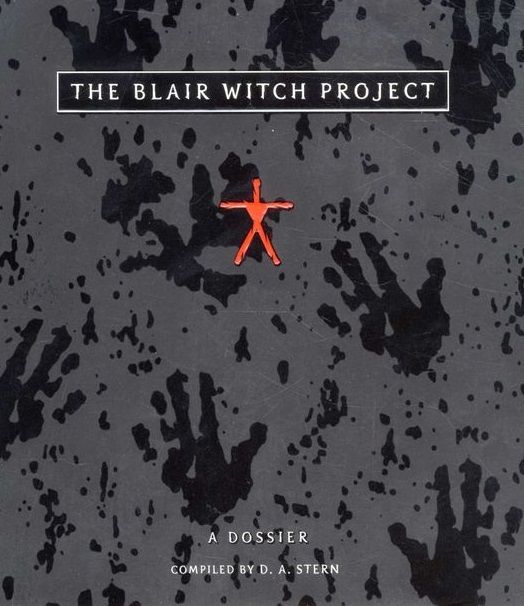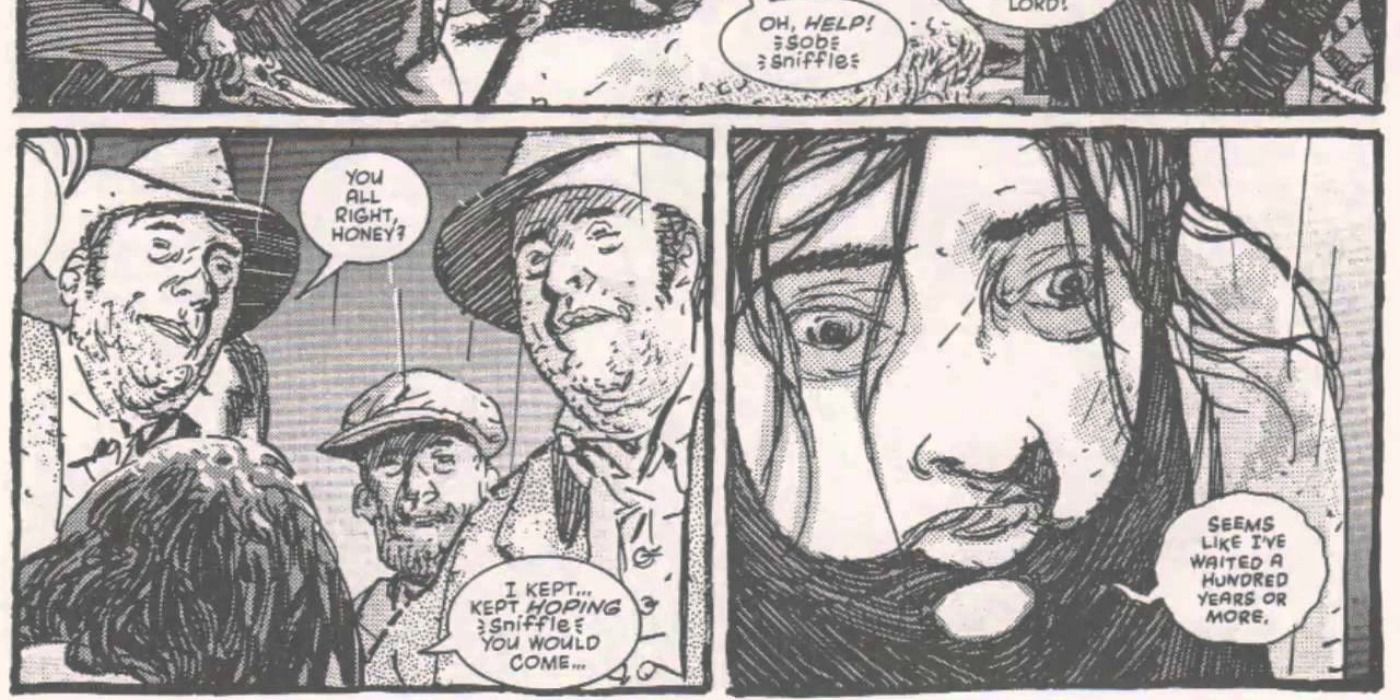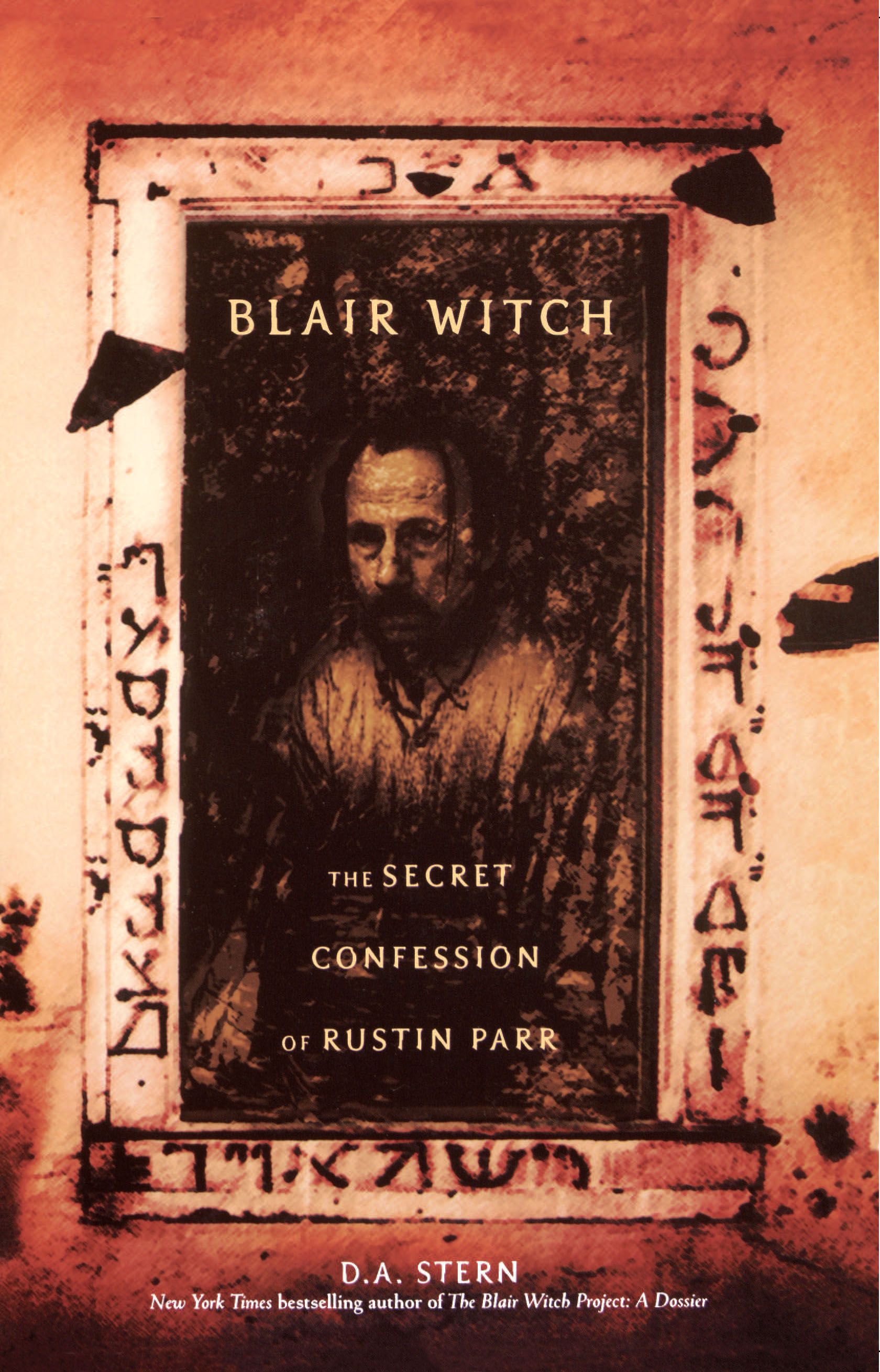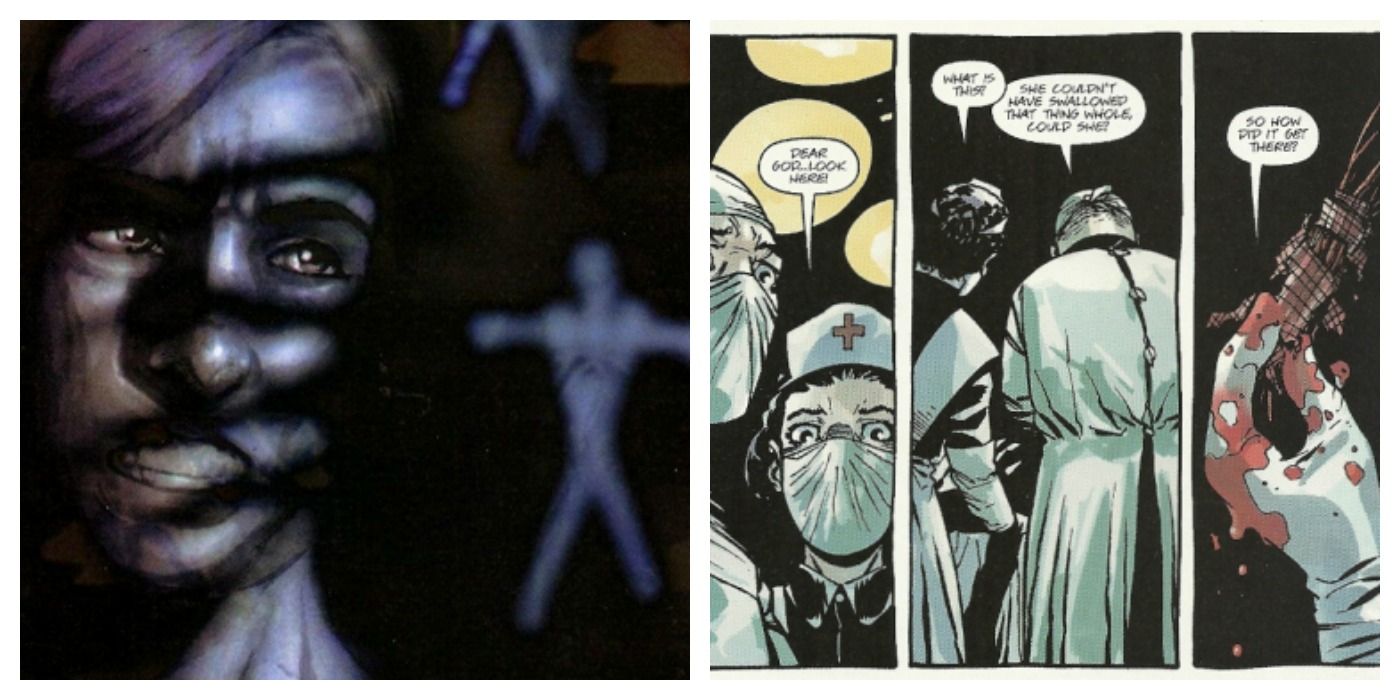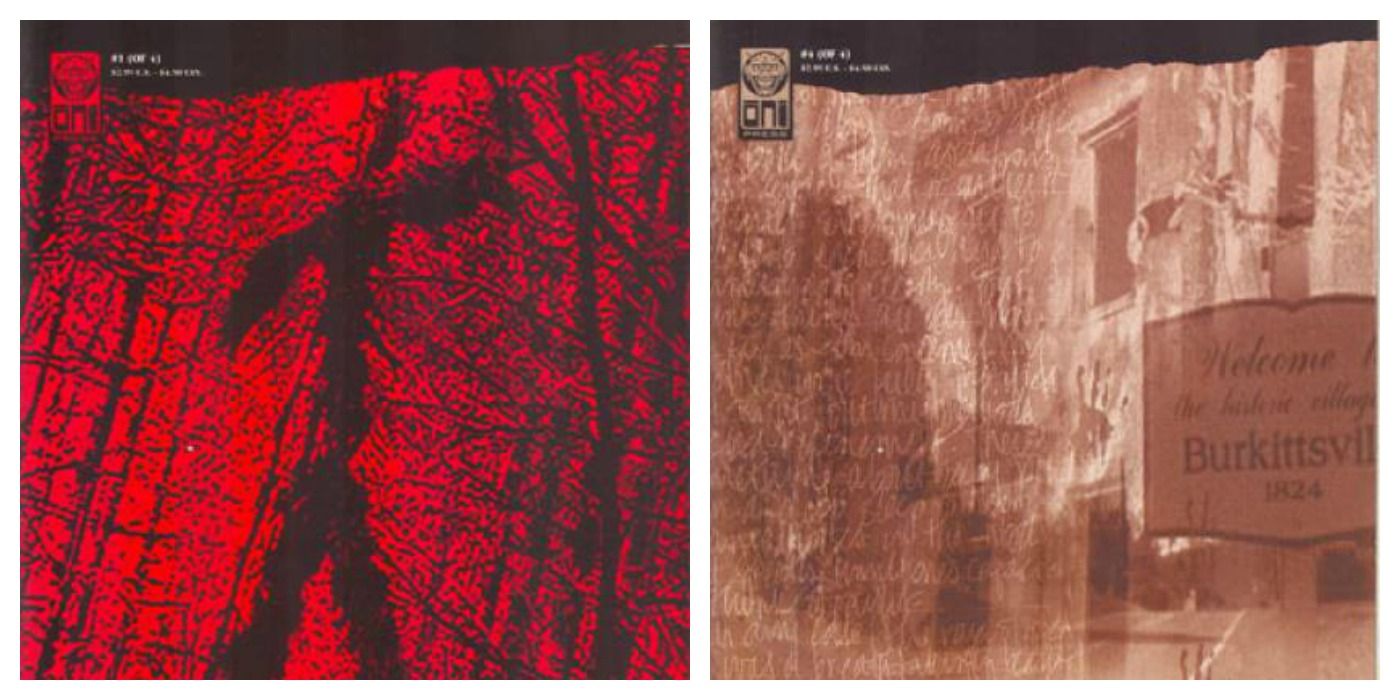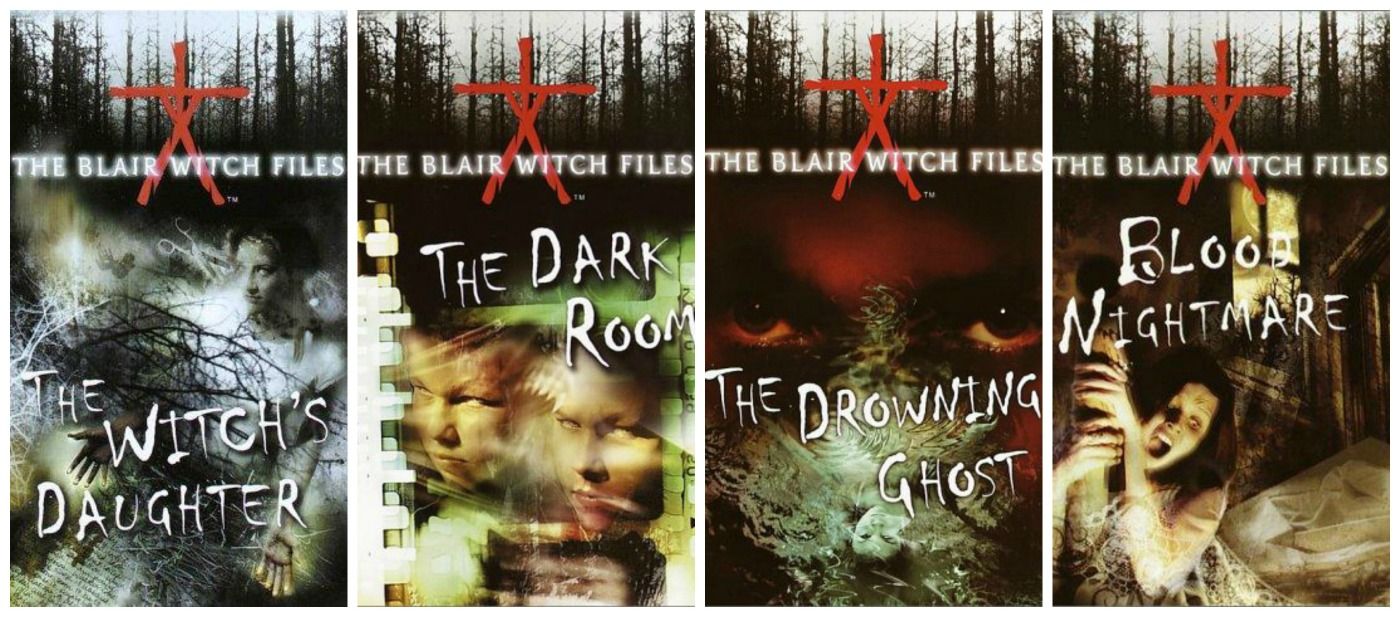You may have heard that a new Blair Witch movie – called, appropriately enough, Blair Witch – is now out in theaters. What you may not have known, however, is just how extensive the franchise’s narrative reach has been up until now.
Right from day one, back in the summer of 1999, the little indie film known as The Blair Witch Project had a massive narrative footprint, with faux documentaries and an online catalogue of “evidence” predating the movie’s arrival, with comic book and print anthologies immediately following it. And once Artisan Entertainment, the studio that ended up purchasing and distributing Blair, saw just how much money was being raked in, it decided to blow the multimedia doors wide open, unleashing a slew of further television specials, novels, comics, and, even, videogames. Simply put, the year 2000 belonged to the Witch.
Until, of course, a little sequel called Book of Shadows: Blair Witch 2 hit theaters just before that Halloween. Rushed into production, lacking any involvement from the original filmmakers, and offering something of a muddled story, the movie not only killed the film side of the meta-franchise, it also put a near-immediate stop to its “expanded universe.” After a veritable explosion of releases and assorted stories, Blair became deader than a doornail.
But what is dead is not forgotten; not only is Lionsgate, who acquired the property 13 years ago, resurrecting the movies, director Adam Wingard and writer Simon Barrett are ardent followers of the expanded mythology, hinting that that the vast assortment of tie-in releases may well play an important role in their Blair Witch – or in the movies beyond.
Here is our Complete Guide to the Blair Witch Mythology. Be sure to take it with you, along with your trusty camcorder, the next time you venture into the deep, dark woods.
Curse of the Blair Witch
Format: mockumentary
Release date: 07.11.99
With the pre-release buzz of The Blair Witch Project reaching record highs (thanks in part to the expertly-crafted website, and in part to the bootleg VHS tapes that were floating around the horror convention circuit), Artisan struck a deal with the Sci-Fi Channel (now branded as Syfy) to do a promotional tie-in. Haxan Films, the production company behind the movie, for its part, saw this as a chance to double down on the “this really happened, and the Blair Witch really is a long-lived urban legend” premise.
It didn’t hurt that the mockumentary could also serve as a primer to all of the backstory and mythological episodes that had been accrued for Blair; as such, Curse of the Blair Witch meticulously recounts the Blair Witch legend, from the execution of Elly Kedward back in 1785 to the butchery at Coffin Rock a century later, to Rustin Parr’s killing spree 60 years after that, all the while laying out the mysterious circumstances surrounding the disappearance of the three Montgomery College student filmmakers in 1994.
Directed by Blair Witch Project’s two helmers, Eduardo Sanchez and Dan Myrick, and written by the franchise’s mythology maestro, Ben Rock, the television special is every bit as well-crafted as its theatrical sibling – and is even closer to the creators’ original vision of the film, to boot, serving as both prologue and alternate concept.
The Blair Witch Project
Format: theatrical film
Release date: 07.30.99
Yes, the film that spawned the entire expanded universe comes second in the chronology; to watch it otherwise is to do a grave disservice to the overarching flow of the mythology.
BlairWitch.com
Format: website
Release date: April 1999 (final form)
Unlike the standard movie website (including that, ironically enough, for this year’s Blair Witch), The Blair Witch Project’s online home eschewed simply listing release dates and trailers for being a repository of the movie’s mythology, containing references to the historical incidents that would be more fully fleshed out in Curse of the Blair Witch along with a heaping helping of “behind the scenes” material, such as the photographic evidence of the filmmakers’ abandoned car and missing gear or clips from the local Maryland media recounting their disappearance.
Users can spend hours poring through the information – which they did for nearly a full year before the movie’s theatrical debut. And thanks to the insistence of Lionsgate and the tireless efforts of webmaster Dan Karcher, fans can still do so to this day, as BlairWitch.com has been lovingly restored to its 1999 state, earning it a spot in the Guinness Book of World Records for the longest-running movie site. (You can find the original site here for the time being, as the new film has temporarily taken over the main domain name.)
If BlairWitch.com were up so long before Blair Witch Project’s release, why put it as third on our chronology? The answer comes in two parts. Firstly, only those crazy, diehard fans would find each and every scrap of the most background of information interesting enough to catalogue without having the emotional investment in the film proper (continuing the Star Wars riff, it would be like a casual fan reading all dozen or so prequel books before actually watching The Force Awakens). And secondly, there is a small but potent bombshell revelation contained on the site that puts the film in a whole new context (more on which in just a moment).
The Blair Witch Project: A Dossier
Format: book
Release date: 09.01.99
When a tie-in book was called for by Artisan and publisher Onyx, author Dave Stern came up with a brilliant idea: rather than doing the standard novelization, they would further the deceitful marketing premise by providing a collection of every last bit of information out there on the student filmmakers, on the city of Burkittsville, and, of course, on the Blair Witch herself.
The result is The Blair Witch Project: A Dossier, which takes all of the information from the website, combines it with a number of the personalities from Curse of the Blair Witch (along with a smorgasbord of new info), and cements it in print form. The comprehensiveness of this book cannot be overstated – think of it more as an encyclopedia, indexing progress reports from private investigator Buck Buchanan to Angie Donahue (Heather’s mother, and his client) and collecting photographs of the various crime scenes. It’s like having a Blair Witch-specific Wikipedia right there on your book shelf.
The real treat here, however, is the reproduction of Heather’s journal from the website, a running commentary actually written by the actress herself during the film shoot that contains the aforementioned bombshell twist: Heather was sending energy out to the Blair Witch well before she and her student colleagues set foot in the woods, hoping to coax the ghost out in order to document her on film. This not only adds an extra dimension to the film, it also turns the now-iconic “I’m sorry” scene on its head.
The Blair Witch Project #1
Format: one-shot comic book
Release date: July 1999
How does one would do a found-footage comic book? The answer, it turns out, is rather easy – just as Haxan Films posited that it was simply the curator of all this material it had acquired, editing it into a viewable theatrical format, Oni Press’s angle was that they, too, were responsible for taking material they had come into contact with and professionally updating and (re-)releasing it.
Released in conjunction with the original film, Oni’s editor-in-chief spins the tale in a brief introduction that he had come across Wood Witch Said, a self-published mini-comic written and illustrated by Cece Malvey, a Johns Hopkins student who went missing for the better part of a day while on a Botany class trip – during which time, he claims, voices filled him in on all the important episodes throughout the Blair Witch’s time haunting the Black Hills Forest. When Haxan asked to collaborate with the comics publisher on a tie-in book, the EIC immediately suggested doing Malvey’s twisted, difficult-to-read work justice.
The Blair Witch Project #1, therefore, provides the first narrative take on three of the mythology’s most important events: the banishment of Irish immigrant Elly Kedward, who history remembers as the woman who was transformed into the Blair Witch; the butchery at Coffin Rock, when a search party looking for a “missing” child is slaughtered in a rather gruesome way; and Rustin Parr’s manipulation into the murder of seven children, an event which will prove to be key for the rest of the expanded universe moving forward.
Blair Witch: The Secret Confessions of Rustin Parr
Format: novel
Release date: 08.01.00
Here’s just how in-depth the Blair Witch EU can get: real-life author Dave Stern created a fictitious persona for himself using his real name (just like the actors from the first film) when writing the Blair Witch dossier, sketching out a backstory of how he became an expert on the occult and how he got into contact with the various forces behind The Blair Witch Project, most notably Haxan Films, in order to compile all the various documents and bits and pieces of information floating around out there regarding the Blair Witch, generally, and the events of 1994 and 1995, specifically.
This constructed personality takes the starring role in The Secret Confession of Rustin Parr; this version of Dave Stern, it turns out, was in contact with Dominick Cazale, a priest living and working in Burkittsville in the early 1940s, in order to gain information about the infamous Rustin Parr case. This relationship is what causes the fictitious author to come out to Miami, Florida after a mysterious fire breaks out in Cazale’s home, killing his wife and resulting in severe burns over 30% of the former priest’s body. As the man lay dying, Stern acquired his journal, containing some key insights into Parr’s mind – including his shocking revelation that he didn’t commit the murders, admitted during his final confession in November 1941, right before his execution.
The Burkittsville 7
Format: mockumentary
Release date: 07.16.00
When Showtime acquired the premium cable rights to The Blair Witch Project, both the channel and Artisan wanted to craft another mockumentary in order to generate fresh excitement (and, of course, to replicate the phenomenal success of Curse of the Blair Witch, which ended up being one of Syfy’s highest-rated programs), though with the clear understanding that it wouldn’t betray any of the new story developments from the soon-to-released sequel, Book of Shadows. It fell to Ben Rock, the production designer on the original film and, now, the continuity and mythology editor of the expanded universe, to write and direct the new special.
Rock, interestingly, decided to take a whole new spin on the franchise’s backstory: rather than rehashing Curse’s summary of the Blair Witch mythos, he opted to create a new character, “film historian” Chris Carrazco (John Maynard), who has come up with the hypothesis that it wasn’t Rustin Parr who killed the so-called Burkittsville 7 fifty years previously but, rather, Kyle Brody, the only abductee who had managed to escape his captivity in Parr’s infamous cabin in the woods, and who implicated the hermit in court. One of the experts that Carrazco calls upon to help furbish his case is none other than Dominick Cazale (Sid Conrad) himself, who recorded his interview just literally days before the fire that would kill him – making his central role in the previous book, The Secret Confession of Rustin Parr, all the more poignant..
Rather than revealing new corners of the Blair narrative, as the previous installments in the meta-franchise did, and rather than crafting spinoff adventures that are only loosely connected to the main timeline, as future installments would do, The Burkittsville 7 is an engaging and experimental take on Blair Witch that is wholly unique, making it one of the most enjoyable chapters.
Blair Witch: Dark Testaments #1
Format: one-shot comic book
Release date: October 2000
The final installment of the Rustin Parr trilogy once again provides a different perspective on the character from a different source (this time, retired teacher Davis Crane, a classmate of Rustin’s), but it also looks to cement him as the Blair Witch’s plaything rather than continue the revisionistic or otherwise deconstructive take that its two predecessors did.
The story here looks to explain the origins of the character – how Rustin started off life as a sweet and gentle (if a bit dimwitted) child who then gets roped into the Witch’s spell thanks to his tainted twin brother, Dale (whose place as consort or conduit he’s ultimately destined to take). It’s a story that makes the reader feel a bit of sympathy for an individual who would go on to murder seven innocent children – a not-too-easy feat, and one that only serves to (further) deepen the franchise’s overriding mythology.
When combined with the tight script and the strong visuals (from The Walking Dead artist Charlie Adlard), it makes for one of the strongest installments of the entire expanded universe.
Book of Shadows: Blair Witch 2
When Book of Shadows: Blair Witch 2 was released on October 27, 2000, Artisan and its various licensing partners thought that not only would the film be the continuation of the nascent Blair movie franchise, it would also serve as the launching pad for the next round of expanded universe materials. Piggybacking off of its release was a heavily expanded lineup, ranging from a trilogy of videogames to what was expected to be a years-long young-adult book series.
Tying into the movie specifically, though, was a third collection of items that would do for BW2 what the original documentary, book, and comic did for The Blair Witch Project. Given that the whole lot has been written out of the official continuity as defined by new rights holder Lionsgate (which wasn’t too terribly difficult to do, given that the sequel already exists in a kind of parallel dimension from its predecessor), we’re only going to quickly mention them here.
First up is Shadow of the Blair Witch, the third and final Blair mockumentary (which was also aired on the Syfy Channel, like Curse of the Blair Witch); following that is Book of Shadows itself; and bringing up the rear are Blair Witch: Book of Shadows, Dave Stern’s second dossier, and the ebook Graveyard Shift, his final manuscript. Of all these, Graveyard is the only one that can be (largely) enjoyed as a separate story of its own, independent of the movie.
The Blair Witch Chronicles
Format: four-issue comic book miniseries
Release date: March – July 2000
This anthology series tackles one specific group’s interaction with the Blair Witch at various points throughout time, with the glue between each of the encounters being The Blair Witch Project’s release and the nationwide interest it’s sparked in the local supernatural happenings. Along the way, a few extra “clues” as to how the locals view – and “interact” with – the demonic entity in the woods can be gleaned, helping to fill in some of the corners of Haxan’s carefully-constructed world.
Here are Chronicles’s stories in chronological order:
- 1827 – the Winston Seminary in Boston attempts to establish a church in the newly-founded Burkittsville, although the entity in the woods has other ideas about the ideological intrusion.
- 1911 – a newly-arriving family fails to provide an offering to the Blair Witch while going out on a hunting excursion, with the insult resulting – of course – in a rather gruesome end for all of the new settlers.
- 1955 – a love-struck teenage boy recruits his brother to hide out in the woods, where his ex-girlfriend is going to go “park” with her new beau. The siblings attempt a Back to the Future-style rescue of the gal from the brute, but what they find instead is the couple’s slaughter – and the beginning of a lifelong curse for themselves.
- 1991 – a local coven of Wiccan witches is requested to come out to Burkittsville to cleanse a house right on the edge of the Black Hills woods. Their spell of protection backfires, however, resulting in their all being hunted down.
The Blair Witch Files
Format: young-adult novels
Release date: 07.01.00 – 07.10.01
Cade Merrill, Heather Donahue’s (hastily conceived) younger cousin, is devoted to finding his long-lost relative and, as such, has begun investigating a series of paranormal happenings in the Burkittsville area that may – or may not – be related to the phenomenon known as the Blair Witch. Such is the premise of The Blair Witch Files, a series of eight, largely-unconnected young adult novels that have more than a passing resemblance to that other dominant force of the ‘90s, The X-Files, from their premise to their cover designs to their largely-unresolved cases to, of course, their very title.
Although there are certain items introduced in this series that do get picked up in the wider expanded universe – such as the existence of Dale Parr, Rustin’s ill-fated brother – the stories are generally written for a younger and more casual audience, with fairly limited connectivity to the rest of the Blair lore. Still, Files does pull one inspired flourish from the found-footage nature of the entire multimedia franchise: after having shut down the website that served as his investigative base of operations (and which was mirrored by a real-world site that readers could flock to), Cade decides to focus on several of the most prominent cases and transform them into book format, replete with his own personal Post-it-style notes contained throughout.
If the threadbare nature of The Blair Witch Files isn’t enough to turn you off, then this presumably will: Adam Wingard and Simon Barrett, the director and writer, respectively, of the new Blair Witch, have stricken the young adult books from the canon.
The Blair Witch, Volumes I – III
Format: computer games
Release date: October – November 2000
Of all the various Blair Witch releases, there are few weirder than the PC game series that was released in the final few months of 2000 (right alongside, incidentally, Book of Shadows). On the one hand, each of the three installments – Volume I: Rustin Parr, Volume II: The Legend of Coffin Rock, and Volume III: The Elly Kedward Tale – are all based on historical events lifted right from the first film’s backstory, offering a much more in-depth depiction of those events than what was offered in any of the previous expanded universe stories. And, to top it off, the Haxan filmmakers specifically staked out the rights to any videogame adaptations of The Blair Witch Project for themselves, allowing Artisan to have dominion over all the rest (presumably due to their love of gaming).
On the other hand, however, the games feature a whole host of incongruous items, to put it mildly, ranging from demons that the player must battle in the woods to, incredibly enough, the inclusion of Doc Holliday, a character from one of the developers’ previous titles, Nocturne. This forces us to conclude, speaking in the most technical and obsessive-compulsive way possible, that the PC games aren’t canon, placing them in the same pile as the officially disavowed Blair Witch Files.
Still, there is one special narrative nugget that, while generally hinted at in the other tie-ins, is really focused upon here: the hint that the Blair Witch isn’t the Blair Witch at all. Players learn that the Native American tribes who used to reside in this area learned long ago to steer clear of the Black Hills woods, specifically because of a demon they call Hecaitomix that resides there. Yes, the videogame trilogy is saying that the entity history has come to know as the Blair Witch predated poor ol’ Elly Kedward by centuries, if not millennia – a twist that would have been revealed in the various follow-up films Haxan wanted to produce before Book of Shadows ruined it all.
[Special thanks to Doug Murphy, Blair Witch superfan extraordinaire; Ben Rock, the expanded universe’s guiding light; Eduardo Sanchez and Dan Myrick, co-directors and -writers of The Blair Witch Project; Gregg Hale, the film’s producer; Dan Karcher, keeper of the BlairWitch.com keys; and Dave Stern, author extraordinaire, all of whom were interviewed extensively for this feature.]
Blair Witch is in theaters now.

